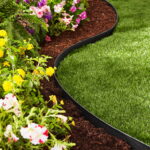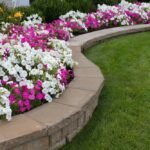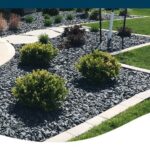Landscaping borders are an essential element in creating a well-manicured and cohesive outdoor space. These functional and decorative barriers serve as a frame for various features in a garden or yard, providing definition and structure. They not only enhance the aesthetic appeal of a landscape but also help to organize and differentiate different areas within the outdoor space.
There are various materials that can be used to create landscaping borders, such as brick, stone, concrete, wood, and metal. Each material has its own unique characteristics and benefits, allowing homeowners to choose the option that best suits their desired look and budget. Brick borders, for example, provide a classic and timeless appearance, while stone borders add a natural and rustic charm to the landscape. Wood borders are a popular choice for a more casual and organic feel, while metal borders offer a modern and sleek look.
In addition to the aesthetic benefits, landscaping borders also serve a functional purpose. They help to prevent erosion and soil runoff, keeping the garden beds and plantings in place. Borders can also act as a barrier to contain mulch, gravel, or other ground covers, helping to maintain a neat and tidy appearance in the garden. Furthermore, borders can provide a visual guide for mowing or edging, making maintenance tasks easier and more efficient.
When designing and installing landscaping borders, it is important to consider the overall style and layout of the outdoor space. The border should complement the existing architecture and landscaping elements, creating a seamless and harmonious look. It is also crucial to take into account the practical considerations, such as the size and shape of the border, the maintenance requirements, and the cost of materials and installation.
Proper maintenance is essential to ensure the longevity and effectiveness of landscaping borders. Regular inspection and upkeep are necessary to check for any signs of damage or deterioration, such as shifting, cracking, or rotting. Depending on the material used, borders may require occasional repairs or replacements to keep them looking their best. By staying on top of maintenance tasks, homeowners can preserve the beauty and functionality of their landscaping borders for years to come.
















